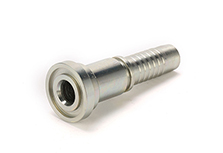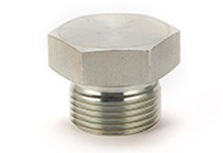There are several thread types available when selecting the correct fittings for your equipment. Choosing the correct thread type will ensure optimum compatibility with your equipment and avoid malfunction. It’s importation for us to make sure the correct thread size do you have. But how to figure out thread size?
Step1.Identifying what kind of fittings do you have.
Threads are divided into four primary main types:NPT,G/BSP,PT,Metric or UN/UNF.
Firstly,make sure your the thread is male or female.Male threads have threads on the outside while female threads are on the inside.
Next,identify the thread is tapered or parallel? Sometimes you can determine by visual inspection. If you can’t,just use the jaws of your caliper to measure the first,fourth and last full thread.If the measurements are all the same,it’s a parallel thread(straight thread),and if the measurement decrease,then it’s a tapered thread.
Step 2.Measure the diameter
Use a caliper to measure the outside diameter of a male thread and inside the diameter of a female thread.
Step3.Measure the pitch size
Use a pitch gauge to measure pitch size. Thread pitch size is the distance between threads. They are measured by the number of threads per inch or the distance between threads on metric thread types.
Step4.Match your data of first three steps to below standard data and find the correct thread size.
Most kinds of thread hydraulic fittings are available in QC Hydraulics. And we can provide technical support for your questions. If you are unable to identify your thread type and size. Please contact us to talk more details.



















